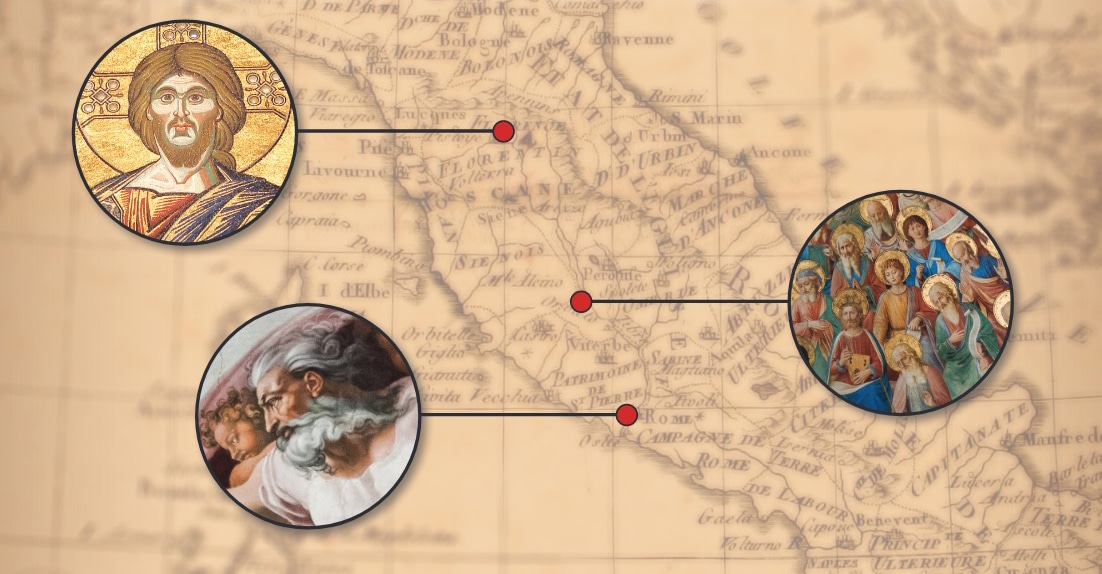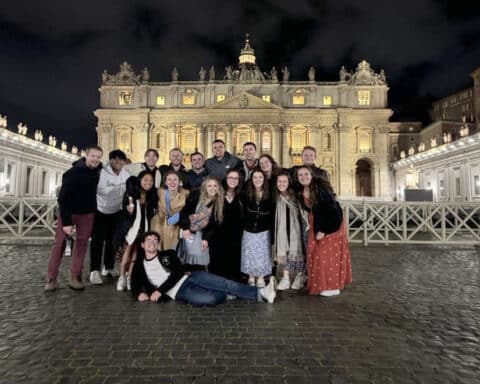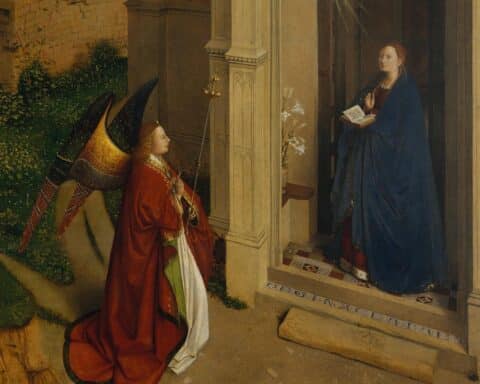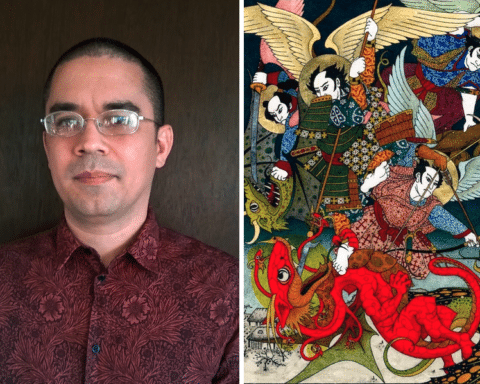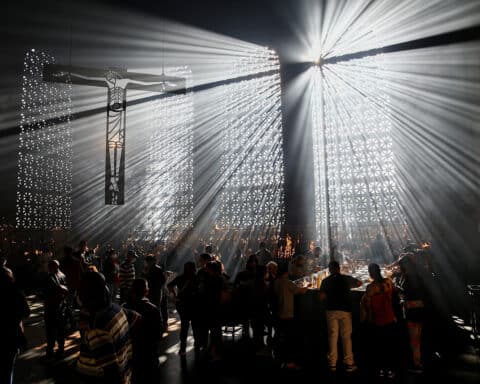The sacred art of this world is not eternal, but it calls us to what is. This is never clearer than when art invites us to contemplate the “last things” in Christian hope. In relation to our end in God, all of life is a pilgrimage that begins in the fount of baptism.
For centuries and centuries Christians have made pilgrimages all over the world, especially to Rome where the earthly pilgrimages of both St. Peter and St. Paul came to an end, followed by so many others after them. In the Middle Ages, pilgrims would walk great distances and undergo great trials to reach the Eternal City, while today all those roads leading to Rome include highways, railways and airport runways. Slowness or swiftness of travel alone does not a good pilgrimage make, though the willingness to be changed and even to struggle is necessary to journey as a true pilgrim.
Today, with all the conveniences that could reduce our need to be inconvenienced on a pilgrim road, the return to sacred art can teach us how to allow ourselves to be changed along the way to our desired end.
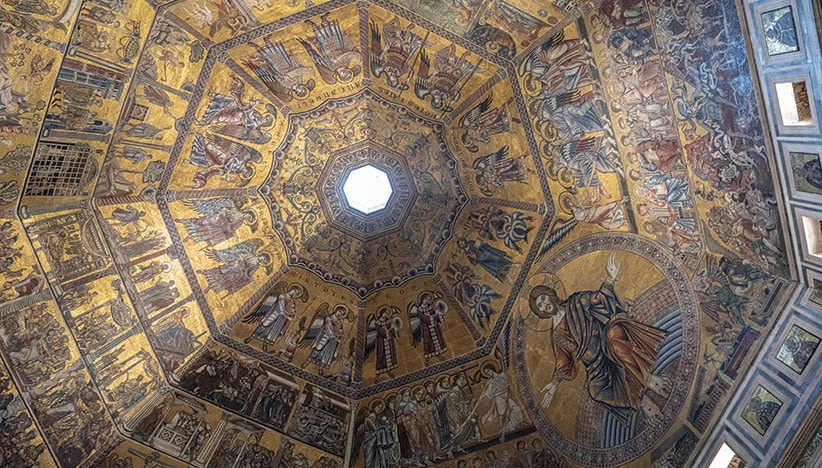
Immersed in Florence
Let us begin our pilgrimage to Rome in Tuscany, a moderate distance from our journey’s end. Since we cannot go together physically, let us go together in prayer and imagination, slowing down to encounter the sacred art we would find there and along the way.

The octagonal rings in the ceiling are not, however, unbroken. Taking up three sides of the octagonal surround and linking the beginning and end of each narrative sequence is the dominant artistic feature of the whole space: the Last Judgment. Christ reigns in the center, showing the wounds by which his victory is won. Christ orchestrates the final action at the end of history. To the left and right of his head, two angels blow the final trumpet blast, while other angels process toward Christ with the instruments of his passion. To the left and right of Christ’s hands, his apostles surround him, led by his Blessed Mother and John the Baptist, and accompanied by saints and martyrs. Directly below his feet, the tombs of the dead are opened in one of two directions: toward Christ’s right, where the saved are gathered to process into the heavenly bliss of praise, and to Christ’s left, where the damned are ushered into the torments of hell. A three-headed Dantean Satan lords over the forsaken space.
Those plunged into the waters of baptism below are also plunged into the narrative drama above. The beginning and end of Christian life wrap like a ring around the one resplendent jewel: the person of Christ.
To stand beneath this ceiling today in the place where countless Christians began the pilgrimage of faith is to gaze upon the ordered movement of salvation history that moves from the act of creation by the word to its consummation in that same Word made flesh who suffered, died and rose. To look up through the saved and the damned to the person of Christ, you glimpse the awesome mystery of divine love intertwined with human freedom. The journey of the Christian life is a real journey with real danger and real glory.
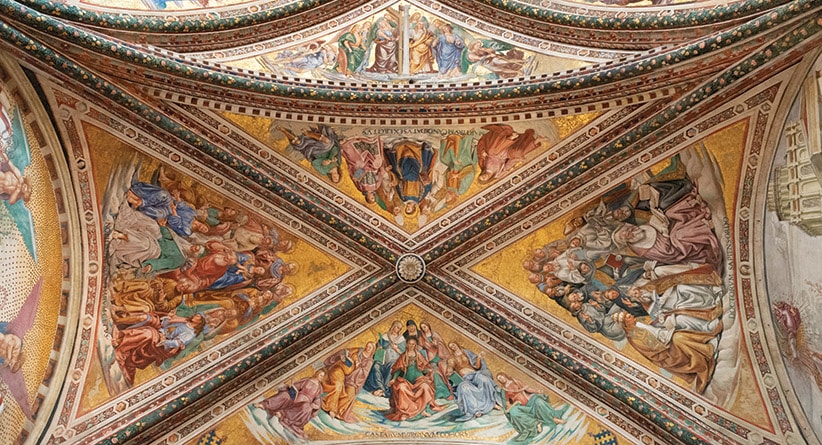
Enwrapped in Orvieto
If we left the Florentine baptistery and walked south eight hours a day for four days, the next stop on our pilgrimage would be the cathedral in Orvieto, perched on a small, rock cliff overlooking a vast valley below. The cathedral itself is dedicated to the Assumption of the Blessed Virgin Mary, which is boldly presented on the cathedral’s façade along with her heavenly coronation. In Mary’s Assumption, the humanity shared with Christ shares in his glory. Christ draws his Mother into the mystery of divine love, not as a spirit or soul alone, but indeed as a whole person. The Assumption is bodily: Mary remains an ensouled body in beatitude.
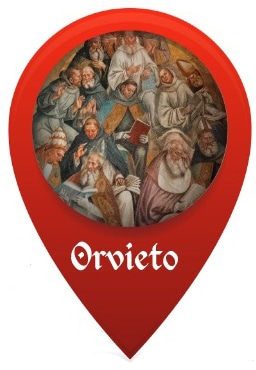
To your immediate left is the chaotic scene of the Antichrist, who stirs up violence and disarray through his zealous preaching. This continues behind you with the scene of the end of the world, in which the tragedy of human pride and sin covers the earth in darkness. Then to your immediate right is the resurrection of the flesh. In this panel, two angels blow the trumpets of the end times and out of the earth the dead arise. Some are still merely bones, some with sinews and muscles attached, and many are already standing fully erect in the flesh. These are undoubtedly human beings raised from the dead: whole persons and not discarnate spirits. You see their bodies stripped of what covered them in life so they each now appear simply as they are. And by their flesh — the touch of their bodies — these persons are connected to one another.
In front of you — in the front half of the chapel — you see to your right the fate of those who have turned neither to God nor to neighbor. These are the damned being assembled for perdition; even as they are grouped together in a single panel they are isolated from each other. They neither touch nor look at each other, so consumed is each one in their own drama. Each of the damned is dominated by a demon and each will, inevitably, be pulled into the fires of the hell they have chosen for themselves. These fires are reaching into the assembly even now.
On the opposite wall — still in front of you but now on your left — you see the gathering of the saved. The glory of heaven like a golden curtain falls upon them. Their eyes are drawn upward with their open postures welcoming what is being given to them. They are truly together. A band of angels plays music above them and you have the sense that this music, too, is gently falling upon the saved, surrounding and filling them. Here and there members of this community are being crowned at the hands of the angels, and then you see where this whole community is going. To the far right of the panel, where the side wall meets the altar wall directly in front of you, a procession is beginning, not just around the corner but indeed up along the altar wall itself. The journey of the saved has become a final pilgrimage up to the ceiling, where the heavenly order you first glimpsed is arrayed. In this chapel, with heaven above and the drama of earth around you, your eyes return again to where they began. The action of the altar points you to the destiny of the Christian saint.
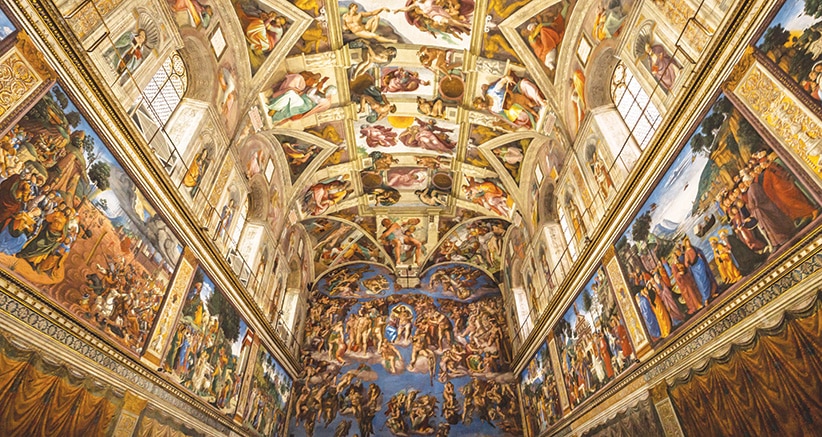
Upended in Rome
Three more days hard travel southward by foot would take us from the Cathedral of Orvieto to St. Peter’s piazza. Beginning with this piazza and beyond it are not just places of prayer, but indeed are sites to see. Tourists and pilgrims are now in one swirling movement. This confluence is nowhere more apparent than at the heart of the Vatican Museums: the Sistine Chapel.
This chapel would be the perfect end of a pilgrimage with sacred art, except that, when walking in, you immediately feel that it is not the end at all. There is no disappointment with the ceiling or the walls; rather it is the ground level that is the problem. There are just so many people swirling around in what seems at first like no discernible pattern. They snap photos on their phones, eliciting amplified announcements from of “Silenzio! No photo! No video!” These announcements come again and again. There is no silence. This space is disordered. How could this be a place for prayer?
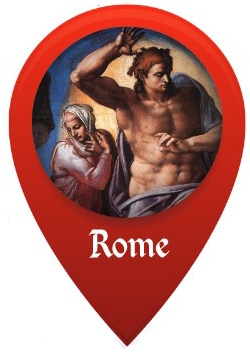
But then some things look more familiar. There is the gathering of the damned down below Christ’s feet, to his left. And down below to his right, bodies are rising out of the ground and then, surprisingly, right off the ground. You look closer and notice that some of these people are being pulled up by other people further along. They are being pulled up toward Christ — moving up and to the center where he is. You look back up to Christ and now that movement of his body and the swinging of his arms looks a bit different: He is moving everything by the way he moves.
All the while, as your eyes are drawn to this glorious and troubling wall in front of you, you are bumped, nudged, and disrupted by all these other people around you. Some may be pilgrims, most are tourists, few are praying. If only they would disappear, you could gaze and pray alone, undisturbed. Alone, to gaze upon a drama of swirling humanity being moved by Christ.
But imagine, if you will, that gravity shifted and you alone were suddenly standing, not on the floor, but on the wall of the “Last Judgment.” You are standing on the wall. As you look back out to where you just were, what once was the action on the floor is now, in your vision, happening on a wall. All those people who were crowding in around you. What are you seeing? A drama of swirling humanity being moved by … what? Dare you say, “Christ”?
Maybe this chapel with all its people and all the commotion really is, after all, the perfect end to this pilgrimage. This is a place where you are called to imagine the very crowd you are standing in as the same swirling mass of humanity you are gazing at on the wall. The order of Christ is rarely clearly visible in this world, so the last part of this pilgrimage is to begin to learn how to pray as a member of these people: swirling around, members rarely discernible from one another. Indeed, the end of every pilgrimage is the conversion to a charitable life.
Leonard J. DeLorenzo, Ph.D., serves in the McGrath Institute for Church Life and teaches theology at the University of Notre Dame. His latest book is “What Matters Most: Empowering Young Catholics for Life’s Big Decisions” (Ave Maria Press, $16.95).
| For Further Reading |
|---|
|
For those interested in learning more about the Faith through sacred art, here are some books for further reading: “The Beauty of Faith: Using Christian Art to Spread the Good News” by Jem Sullivan, 2009 (OSV, $9.95). Over 2,000 years, Christian art has expressed the truth of the Catholic faith for generations of the faithful. In the “Beauty of Faith,” readers will learn the language of art to make visible the mysteries of Scripture and traditions through paintings, sculpture, mosaics, stained glass, poetry and sacred music. “Looking at a Masterpiece” by Madeleine Stebbins, 2017 (Emmaus Road Publishing, $89.95). In “Looking at a Masterpiece,” Stebbins explores the themes of more than forty of the world’s finest artistic treasures — from masters such as Piero della Francesca, Hans Holbein, Caravaggio, Rembrandt and more. The book includes full color, high-quality reproductions of these great works of art.
After the Reformation, Catholics realized the best way to defend the Faith and draw people together was through beauty, specifically through sacred art. Lev introduces readers to the many artists — such as Michelangelo, Caravaggio, Guido Reni and Barocci, among others — and their masterpieces, which affirmed the teachings of the Church during the Catholic Restoration. |
| Why Sacred Art Matters |
|---|
|
St. Teresa of Ávila once remarked that for the first 14 years of her life, she could not enter into meditative prayer without the help of a book. Prayer is rarely a spontaneous phenomenon; it requires preparation and inspiration.When we walk into a church, we transition from the chaos of daily life into the calm of a sacred space. We mark this transition by blessing ourselves with holy water, quieting our speech, and genuflecting before kneeling down in the pew.As we gaze around the church, there are objects of beauty that draw our attention. The ornamentation of the tabernacle signals that there the King is present. The Stations of the Cross tell the story of Our Lord’s final hours of life. Stained glass windows, statues and paintings speak of the heroes of our Faith, whose stories give us strength and inspiration in our daily struggles of faith. When we look around our churches, we see not mere decorations, but portals between heaven and earth — helps to our prayer. It is worth paying attention to and investigating the details of the art that we find in our churches. Many churches, even simple parish churches, have written and illustrated histories available describing the art inside. In most dioceses there are local places of pilgrimage that contain great works of sacred art: the cathedral, shrines, monasteries and convents. For windows into different times and places, many art museums (both public and private collections) house paintings and statues that once stood in distant churches inspiring people like you. Developing a love for sacred art is not merely a hobby — it is a portal. The sight and memories of sacred images support our lives of faith and serve as bridges that help our daily lives to touch the divine. — Father Justin Huber is a priest of the Archdiocese of Washington. He writes about art for The Priest magazine. |

